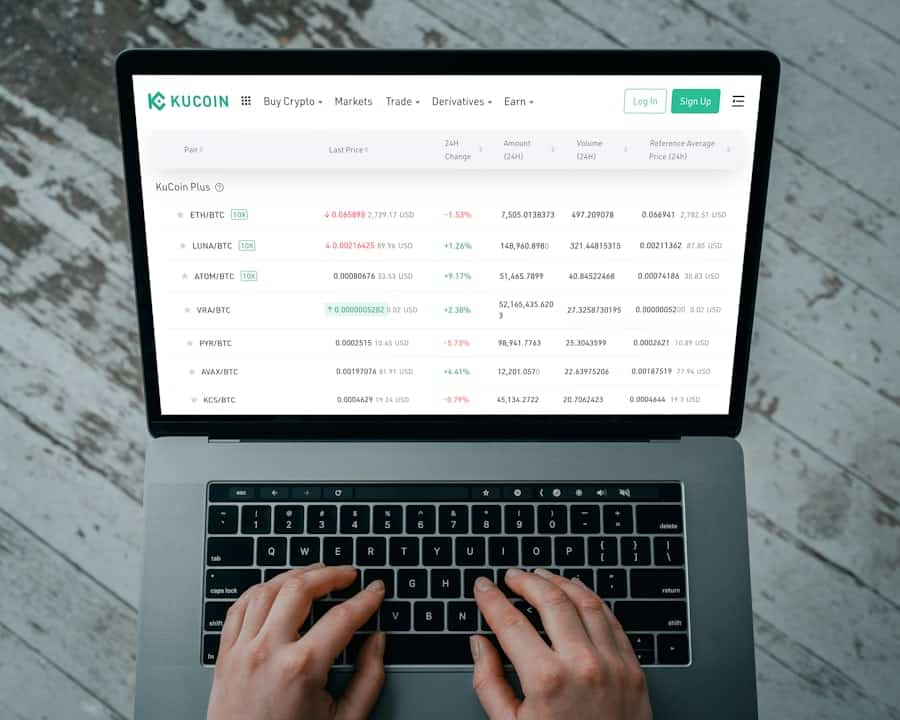Defense in depth is a cybersecurity strategy that employs multiple layers of security controls throughout an organization’s IT infrastructure. This approach provides comprehensive protection against cyber threats by ensuring that if one security layer is compromised, additional layers remain to prevent further intrusion. The strategy is based on the understanding that no single security measure can offer complete protection against all potential threats, necessitating a multi-layered approach to effectively mitigate risks.
A key principle of defense in depth is redundancy, which involves implementing multiple security controls with similar functions. For instance, an organization might use both firewalls and intrusion detection systems to protect their network perimeter, ensuring backup protection if one control fails. Additionally, defense in depth implements security controls at various layers of the IT infrastructure, including network, application, and data layers.
This ensures that even if an attacker bypasses one security layer, additional layers remain to prevent further compromise. Defense in depth is a crucial component of a comprehensive Cybersecurity strategy, offering organizations a multi-layered approach to protect their IT infrastructure from various cyber threats. By implementing redundant security controls across multiple layers of the IT infrastructure, organizations can significantly reduce the risk of successful cyber attacks and minimize the potential impact of any security breaches that may occur.
Key Takeaways
- Defense in depth involves using multiple layers of security measures to protect against various types of attacks and threats.
- Identifying vulnerabilities is crucial for understanding potential weak points in a system or network that could be exploited by attackers.
- Implementing network segmentation helps to isolate different parts of a network, limiting the impact of a potential breach.
- Utilizing multi-factor authentication adds an extra layer of security by requiring multiple forms of verification for access.
- Regularly updating and patching systems is essential for addressing known vulnerabilities and reducing the risk of exploitation by attackers.
- Training and educating employees on security best practices is important for creating a security-conscious culture within an organization.
- Monitoring and responding to threats in real-time is crucial for identifying and mitigating potential security incidents before they escalate.
Identifying Vulnerabilities
Identifying vulnerabilities is a crucial aspect of maintaining a strong cybersecurity posture, as it allows organizations to proactively address potential weaknesses in their IT infrastructure before they can be exploited by malicious actors. Vulnerabilities can exist in a wide range of areas, including software applications, network devices, and even human behavior, making it essential for organizations to conduct regular vulnerability assessments to identify and address potential security risks. One common method for identifying vulnerabilities is through the use of vulnerability scanning tools, which are designed to automatically scan an organization’s IT infrastructure for known security weaknesses.
These tools can identify vulnerabilities such as outdated software versions, misconfigured network devices, and missing security patches, providing organizations with valuable insight into potential areas of risk. In addition to automated scanning tools, organizations can also conduct manual vulnerability assessments, which involve a more in-depth analysis of their IT infrastructure to identify potential weaknesses that may not be detected by automated tools. Once vulnerabilities have been identified, it is important for organizations to prioritize and address them based on their potential impact on the organization’s security posture.
This may involve implementing security patches, reconfiguring network devices, or updating software applications to address known vulnerabilities. By regularly identifying and addressing vulnerabilities within their IT infrastructure, organizations can significantly reduce their risk of a successful cyber attack and maintain a strong cybersecurity posture.
Implementing Network Segmentation

Network segmentation is a critical component of a comprehensive cybersecurity strategy, as it involves dividing an organization’s IT infrastructure into separate network segments to limit the potential impact of a security breach. By implementing network segmentation, organizations can create barriers between different areas of their IT infrastructure, making it more difficult for attackers to move laterally within the network and access sensitive data or systems. One common method for implementing network segmentation is through the use of virtual local area networks (VLANs), which allow organizations to create separate logical networks within their physical network infrastructure.
By assigning different departments or types of systems to separate VLANs, organizations can limit the ability of attackers to move laterally within the network and access sensitive information. Additionally, organizations can also implement network segmentation at the network perimeter by using firewalls to create barriers between different network segments, further limiting the potential impact of a security breach. Overall, implementing network segmentation is an essential component of a comprehensive cybersecurity strategy, as it provides organizations with an additional layer of defense against cyber threats.
By creating barriers between different areas of their IT infrastructure, organizations can limit the potential impact of a security breach and reduce their overall risk of a successful cyber attack.
Utilizing Multi-factor Authentication
| Metrics | Value |
|---|---|
| Number of users utilizing MFA | 500 |
| Percentage of successful MFA logins | 95% |
| Number of MFA bypass attempts | 10 |
| Time taken for MFA authentication | 5 seconds |
Multi-factor authentication (MFA) is a critical security control that adds an extra layer of protection to an organization’s IT infrastructure by requiring users to provide multiple forms of verification before accessing sensitive systems or data. This typically involves something the user knows (such as a password), something the user has (such as a mobile device), or something the user is (such as a fingerprint or facial recognition). By requiring multiple forms of verification, MFA significantly reduces the risk of unauthorized access to sensitive information and systems.
One common method for implementing MFA is through the use of one-time passcodes sent to a user’s mobile device or email address. When a user attempts to access a sensitive system or application, they are required to enter a one-time passcode in addition to their regular login credentials. This ensures that even if an attacker is able to obtain a user’s password, they will still be unable to access the system without the additional form of verification provided by the one-time passcode.
In addition to one-time passcodes, organizations can also implement MFA using biometric authentication methods such as fingerprint or facial recognition. By requiring users to provide a biometric sample in addition to their regular login credentials, organizations can further enhance the security of their IT infrastructure and reduce the risk of unauthorized access. Overall, MFA is an essential security control that provides organizations with an additional layer of protection against unauthorized access to sensitive systems and data.
Regularly Updating and Patching Systems
Regularly updating and patching systems is a critical aspect of maintaining a strong cybersecurity posture, as it allows organizations to address known security vulnerabilities and reduce their overall risk of a successful cyber attack. Software vendors regularly release updates and patches to address newly discovered vulnerabilities, making it essential for organizations to regularly update their systems to ensure they are protected against the latest security threats. One common method for updating and patching systems is through the use of automated patch management tools, which are designed to automatically download and install updates for software applications and operating systems.
These tools can help organizations ensure that their systems are consistently up-to-date with the latest security patches, reducing the risk of potential security breaches due to outdated software versions. In addition to automated patch management tools, organizations can also implement regular maintenance schedules to manually update and patch systems that may not be covered by automated tools. By regularly updating and patching systems, organizations can significantly reduce their risk of a successful cyber attack and maintain a strong cybersecurity posture.
This allows them to address known security vulnerabilities and ensure that their IT infrastructure is protected against the latest security threats, ultimately reducing the potential impact of any security breaches that do occur.
Training and Educating Employees

Regular Training Sessions and Workshops
One common method for training and educating employees about cybersecurity best practices is through the use of regular training sessions and workshops. These sessions can cover topics such as password security, phishing awareness, and data protection best practices, providing employees with valuable knowledge about how to effectively protect sensitive information and systems from potential threats.
Online Training Resources and Educational Materials
Additionally, organizations can also provide employees with access to online training resources and educational materials that cover a wide range of cybersecurity topics. This can include online courses, tutorials, and guides that employees can access at their convenience, allowing them to learn about cybersecurity best practices at their own pace.
Reducing the Risk of Cyber Attacks
By training and educating employees about cybersecurity best practices, organizations can significantly reduce their overall risk of a successful cyber attack and maintain a strong cybersecurity posture. This helps ensure that employees are aware of potential security risks and know how to effectively mitigate them, ultimately reducing the potential impact of any security breaches that do occur.
Monitoring and Responding to Threats
Monitoring and responding to threats is an essential aspect of maintaining a strong cybersecurity posture, as it allows organizations to proactively identify and address potential security breaches before they can cause significant damage. By implementing robust monitoring tools and processes, organizations can quickly detect potential security threats and take immediate action to mitigate them before they can escalate into more serious incidents. One common method for monitoring and responding to threats is through the use of security information and event management (SIEM) tools, which are designed to collect and analyze log data from across an organization’s IT infrastructure to identify potential security incidents.
These tools can help organizations quickly detect potential security breaches and take immediate action to address them before they can cause significant damage. Additionally, organizations can also implement incident response plans that outline specific steps for addressing potential security incidents, ensuring that they are prepared to respond effectively in the event of a breach. By monitoring and responding to threats, organizations can significantly reduce their overall risk of a successful cyber attack and maintain a strong cybersecurity posture.
This allows them to proactively identify and address potential security breaches before they can cause significant damage, ultimately reducing the potential impact of any security incidents that do occur.
If you are interested in learning more about the future trends and innovations in the metaverse and how they are evolving user experiences, you should check out this article. It discusses how the metaverse is impacting various industries and the potential for immersive learning experiences. In the context of cybersecurity, understanding the evolving user experiences in the metaverse is crucial for implementing a robust defense in depth strategy to protect sensitive data and systems.
FAQs
What is defense in depth cybersecurity?
Defense in depth cybersecurity is a strategy that involves using multiple layers of security controls to protect an organization’s information systems. This approach aims to provide redundancy and ensure that if one layer of defense is breached, there are additional layers in place to prevent further access to sensitive data.
What are the key components of defense in depth cybersecurity?
The key components of defense in depth cybersecurity include network security, endpoint security, access control, encryption, intrusion detection and prevention systems, security awareness training, and regular security assessments and audits.
Why is defense in depth cybersecurity important?
Defense in depth cybersecurity is important because it provides a more comprehensive and robust approach to protecting an organization’s information systems. By using multiple layers of security controls, organizations can better defend against a wide range of cyber threats and attacks.
How does defense in depth cybersecurity differ from other cybersecurity approaches?
Defense in depth cybersecurity differs from other cybersecurity approaches, such as perimeter-based security, by focusing on multiple layers of defense rather than relying solely on a single point of protection. This approach acknowledges that no single security control can provide complete protection and aims to create a more resilient and secure environment.
What are some best practices for implementing defense in depth cybersecurity?
Some best practices for implementing defense in depth cybersecurity include conducting a thorough risk assessment, implementing a combination of technical and non-technical security controls, regularly updating and patching systems, monitoring and analyzing security logs, and providing ongoing security training for employees.











Leave a Reply